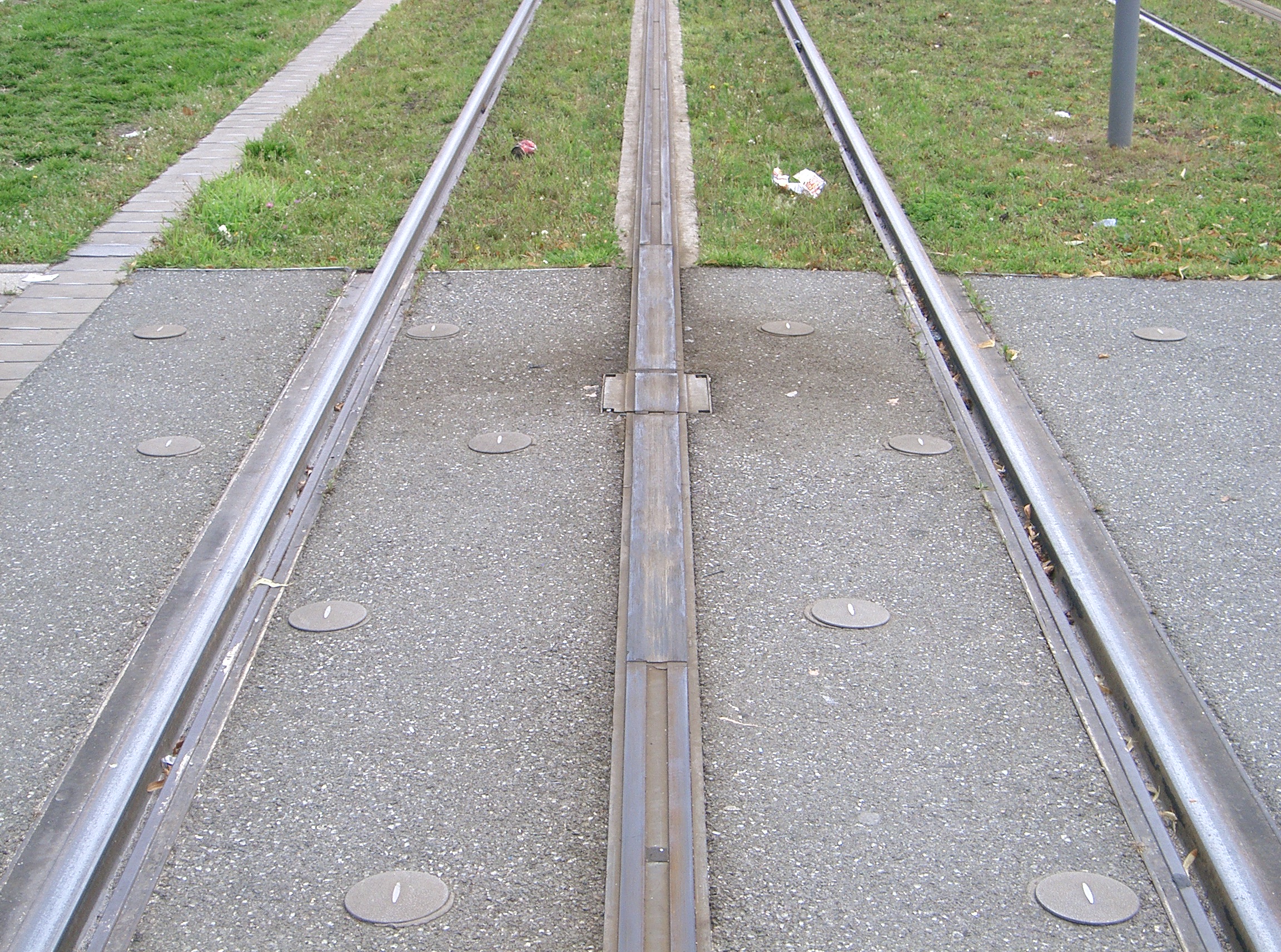Many have hoped that the technology would come to the United States and answer the call to get rid over overhead wires, specifically in the District of Columbia where an old law prohibits wires. It was specifically called for by Clay Chastain for Kansas City's system. However experts in the US have said that Alstom has no plans to bring the system to the United States. Part of the problem is the unknown effects of stray current coming from the third rail when the roads are salted during snow or ice storms.
How it works: Basically a third rail is laid between the two tracks and turns on when radioed by the vehicle. Two shoes, one on each end of the tram take up power as the electrified sections pass under. Sections only turn on when they are underneath the vehicle leaving pedestrians safe from being electrification.

 Flickr Photo Courtesy of Art in BX
Flickr Photo Courtesy of Art in BX Flickr Photo Courtesy of Dorsetbays
Flickr Photo Courtesy of DorsetbaysOutside of the historic downtown, the line in Bordeaux switches over to catenaries. Other cities are looking into using batteries and Stone Consulting that brought us the Kenosha Streetcar for $3 million per mile is also looking to use a ultra-capacitor for a heritage line in Savannah Georgia.

7 comments:
wow...dubai is gonna have one hell of a mass transit system soon!
And what are the chances of this thing failing with the third rail turned on after the car has moved on?
Too bad this is a proprietary system, and nobody will be able to improve it until Alstom's patents expire in a decade or two. I wouldn't want to build my streetcar system with Alstom technology only to find that it can't be used with Siemens or Skoda trains.
It must be safe cause the train is still in the "power block" as the person is stepping directly onto the third rail in the photo.
Very interesting, I never heard of this design! It's a wonderful idea!
I'm not sure Ken. I don't think its happened yet. But as I said in the post, water or ice could cause serious current leakage issues. It's something that they are worried about.
Arcady, i'm kind of in pessimistic mode today, but I think we'll be lucky if we can get 10 systems up in the next ten years here. By then the idea will be free of patent laws. But I hope I'm wrong.
I do not get why people have a problem with overhead wires. Overhead wires are a part of urban life. I like seeing wires around!
I don't understand how and why rail opponents and anti-electrification forces can get away with claiming that overhead wires cause "visual pollution". Why are they still bitching about the visual impact of overhead wires, as opposed to, say, batallions of two dozen buses clogging city streets in just 10 minutes?
And more cities in France are planning to use APS in the future. In Reims, they've selected the APS and Citadis trams for their future tram system, and it will open in 2011. I think they're starting work there now.
Angers is opening two years from now, and they've also selected this for implementation in a second line in Orléans that will open in 2011 and in Tours (in 2013). (Orléans, with an area pop. of around 250,000, already has an 18 km north-south line, drawing some 55,000 passengers a day, and it opened in 2000.)
In Nice, which restored trams last year (on the same day light rail opened in Charlotte), I find it interesting that the Citadis 302 trams (which look an awful lot like the Bordeaux version in appearance) are equipped with batteries to provide operation through visually sensitive parts of the city centre. This is another interesting variant to consider.
However, I note that in each of these cases, these will only be for some short segments, mainly through historic city centres. Also, the articles in French from Wikipedia are linked in the absence of articles in English, as well as for the project in Orléans.
Post a Comment